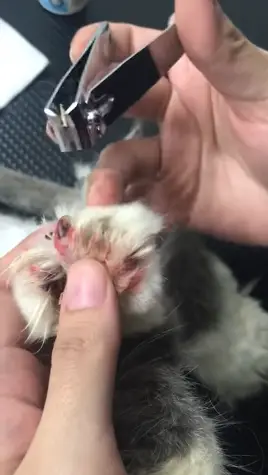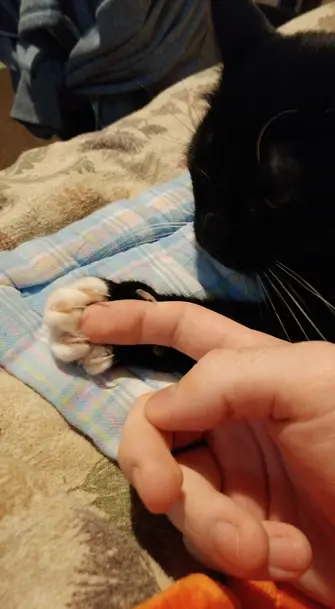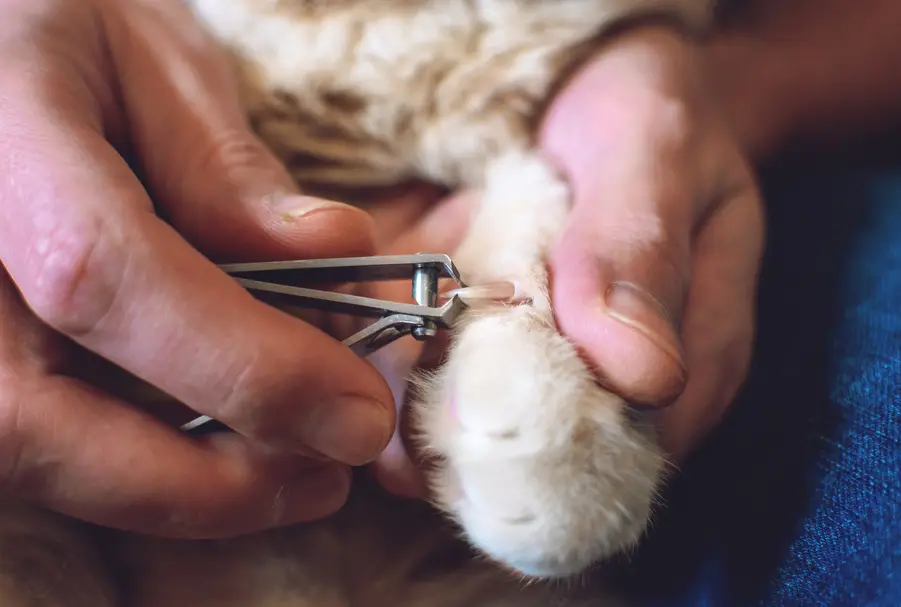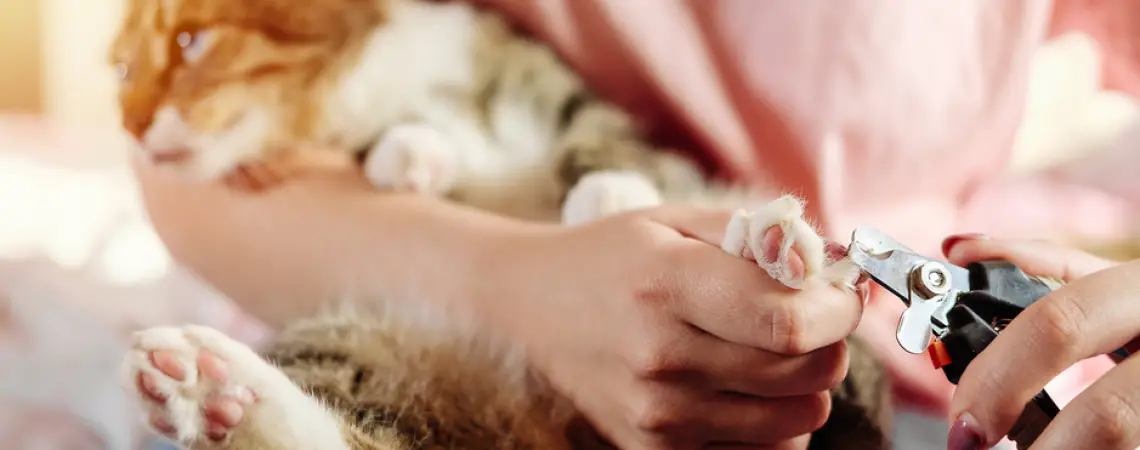Did you know your pet cat sheds its claws? It’s natural and a claw will come off once every few months.
The claws are always growing, with the outer layer coming off every few weeks to be replaced with a brand new, sharper claw.
You might notice a shed claw in your home. It looks like a shell of a claw. Sometimes they will come loose as your kitty cat uses the scratching post or during daily life.
But sometimes the claw doesn’t come off and the claw becomes ingrown. As it continues to grow it will curve into the skin of your cat, and you might find that the cat claw is stuck in the pad or toes!
An ingrown claw can be very painful for your pet cat and should be treated as soon as you become aware of it. The medical name for the condition is onychocryptosis.

Symptoms of cat ingrown claws
Here are some signs your cat might be suffering from an ingrown claw. If you suspect a claw to be the issue, it’s usually easy to see if something is off.
If your cat appears to be in visible pain, then it’s likely they have a cat claw growing out of the pad on their foot! Limping is common when this happens. Refer to the image above to see an example.
- Claw pain (onychalgia)
- Discoloration of the nail
- Pus discharge
- Bleeding
- Limping
- Swelling and inflammation around the nails which may include the paw and foot
- Excessive licking of its paws
- Abnormal looking claws
How to cut overgrown cat claws
You can treat the ingrown claw yourself at home. Use pet nail clippers that you can buy at a local pet store to trim the abnormal nail just above where it grows into your cat’s paw. The tip of the nail may then fall out of the pad easily, or it may be necessary to gently extract it with tweezers.
Your cat probably won’t enjoy this and might try to get away or attack by biting and scratching. You can expect a heap of growling and hissing too. To control your cat (and keep you safe) wrap it firmly in a towel with only the sore paw exposed. This will calm the cat and it won’t be able to struggle so much. You might need help from a friend to gently hold the cat down while you treat the claw.
Be gentle, but firm. It may bleed a little. Stay calm, you’ve got this. Wash the paw with mild antiseptic and warm water to keep the wound clean and help prevent infection. A warm salt foot bath can help speed up the healing process if your fuzzball is willing to dip it’s paw in the water (even half a minute will have some benefit).
Check your cat’s foot for swelling, fever or discharge including pus. Any of these symptoms would indicate infection and you should go to the vet. In a few days your kitty should stop limping.
Watch for infection!
If your cat continues to limp after the claw is removed, then an infection may be present. Check for swelling, and make an appointment with the vet for antibiotics treatment. Can’t get to the vet? Schedule an online consultation to get help at home!
Or you can take a trip to the veterinarian if you are not confident enough to do it yourself. Or if you feel it’s a particularly serious case such as infection has set in or your cat is very sensitive and difficult to hold down it might be best to let the vet take care of it. Your vet might prescribe medication including antibotics. In very serious cases surgery may be needed, but this is not typical.
Cats claws are very important especially for cats that live outdoors or are farm pets. They use them to catch prey, balance, rip meat apart, climb trees and fences and to defense themselves against predators. Without their claws many cats couldn’t survive. So its important they have healthy and functioning claws.
How to prevent cat ingrown claws in the future

Check your cats paws on a regular basis (every 4-6 weeks is ideal) to make sure its claws look healthy. If you catch a possible ingrown claw early it will be less painful then if it’s left and becomes embedded in it’s toe pad.
A scratching pad or something that can be used for the same purpose like a block of wood (not your expensive sofa) is an excellent way for a cat to loosen shedding claws.
Sometimes older cats (or lazy cats) don’t bother to scratch much and are more prone to ingrown claws. It is a natural instinct for cats to scratch but also a cat that has grown up and lives in an apartment might not scratch so much.
Trimming your cats nails can encourage the natural process of shedding. You can do this yourself at home or take your cat to the veterinarian or to a professional pet grooming service. As it can be stressful when you trim your cat’s claws for the first time.
It is easier with practice and after some time it will become a regular part of your cat care routine. Watching some videos on You Tube will help you see exactly how it’s done so you are more relaxed and confident performing the pet grooming task.

Take it slow to make this chore easier!
Get your kitty accustom to you touching their feet without the clippers first, and they’ll be much more at ease when you start clipping their claws regularly.
As pet owners, there is nothing worse than seeing our pets in discomfort or pain. Our hearts hurt when our beautiful, little fur balls are unhappy.
It’s good to be educated on pet care and if you are ever in doubt about what to do, contact your veterinarian. They are the experts and they will be able to put your mind at ease and confirm if your pet has a common issue that is easily treated or some underlying, more serious health problem.

